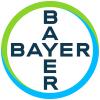Before a new drug can be tested through a clinical trial, a comprehensive protocol, or research plan, is written. Depending on who is doing the research it may be written by a pharmaceutical company, government agency, physician, or research group. The protocol includes details about how the treatment will be administered, how patient safety will be maintained, the type of patients who would be eligible for the treatment, baseline requirements for participants, the purpose of the trial, and the exact procedures that will take place during the trial. The protocol must go through a strict regulatory approval process. Once a protocol is approved, it can begin the clinical trial process.
Clinical trials go through a series of research phases. The initial phase, also called pre-clinical research, tests new therapies in a laboratory. This stage of research is designed to obtain preliminary information regarding how long a drug may stay in a patient’s system, the effectiveness of the drug, and any potential side effects. From there, promising therapies will enter the clinical research phase. Clinical research is broken down into four phases:
- Phase I – This is the first phase in which new treatments are tested in humans. Typically, this type of trial will involve 20-100 healthy volunteers. The volunteers are usually confined to a research center for a period of time so that they can be closely observed. During this phase, the treatments are being tested for many of the same things that were tested during the pre-clinical phase. Initially, however, the dosage levels start much lower than what would be used in laboratory studies. Additional preliminary information is obtained regarding the safety of the drug, how the body metabolizes the drug, which dosage method is best (i.e. by mouth, injection, or IV drip), and the effect, if any, of eating food with the drug.
- Phase II – Once the initial safety of the drug is determined in Phase I, the trial moves into Phase II. In this phase, the drug is tested on a larger group of volunteers (20-300). Researchers assess how effective the drug is and at what dosage levels. If the development of a new drug fails, this is usually the phase in which failure occurs.
- Phase III – During this phase, the experimental drug is compared with the standard treatment currently on the market. This phase of the trial usually involves multiple research sites and 300-3,000 participants. Although Phase I and II trials typically involve healthy volunteers, Phase III trials allow patients to test out new treatments that may be beneficial to them. Typically, a drug must pass at least two Phase III trials in order to be approved to go on the market.
- Phase IV – After a drug/treatment is available on the market, the research does not stop. Phase IV trials are also referred to as “Post Marketing Surveillance Trials.” During this phase, the newly-approved treatments are studied for how they interact with other drugs, how different populations (i.e. pregnant women, children, cardiac patients) respond to the drug, and are continued to be monitored for safety. If a drug fails safety requirements at this point, it can be pulled off the market.
Knowing which phase the research trial is in will help you understand the goals of that trial. In most cases, the results of these clinical trials are published in scientific or medical journals. If you are interested in seeing the results of previous testing for the trial in question, you can ask the doctor, nurse, or research coordinator in charge of your treatment for that information. Keep in mind, however, that it is sometimes many months or even years until the trial results are published.




























